Piperlongumine and p53-reactivator APR-246 selectively induce cell death in HNSCC by targeting GSTP1
- PMID: 29348462
- PMCID: PMC6014869
- DOI: 10.1038/s41388-017-0110-2
Piperlongumine and p53-reactivator APR-246 selectively induce cell death in HNSCC by targeting GSTP1
Abstract
TP53 mutations frequently occur in head and neck squamous cell carcinoma (HNSCC) patients without human papillomavirus infection. The recurrence rate for these patients is distinctly high. It has been actively explored to identify agents that target TP53 mutations and restore wild-type (WT) TP53 activities in HNSCC. PRIMA-1 (p53-reactivation and induction of massive apoptosis-1) and its methylated analogue PRIMA-1Met (also called APR-246) were found to be able to reestablish the DNA-binding activity of p53 mutants and reinstate the functions of WT p53. Herein we report that piperlongumine (PL), an alkaloid isolated from Piper longum L., synergizes with APR-246 to selectively induce apoptosis and autophagic cell death in HNSCC cells, whereas primary and immortalized mouse embryonic fibroblasts and spontaneously immortalized non-tumorigenic human skin keratinocytes (HaCat) are spared from the damage by the co-treatment. Interestingly, PL-sensitized HNSCC cells to APR-246 are TP53 mutation-independent. Instead, we demonstrated that glutathione S-transferase pi 1 (GSTP1), a GST family member that catalyzes the conjugation of GSH with electrophilic compounds to fulfill its detoxification function, is highly expressed in HNSCC tissues. Administration of PL and APR-246 significantly suppresses GSTP1 activity, resulting in the accumulation of ROS, depletion of GSH, elevation of GSSG, and DNA damage. Ectopic expression of GSTP1 or pre-treatment with antioxidant N-acetyl-L-cysteine (NAC) abrogates the ROS elevation and decreases DNA damage, apoptosis, and autophagic cell death prompted by PL/APR-246. In addition, administration of PL and APR-246 impedes UMSCC10A xenograft tumor growth in SCID mice. Taken together, our data suggest that HNSCC cells are selectively sensitive to the combination of PL and APR-246 due to a remarkably synergistic effect of the co-treatment in the induction of ROS by suppression of GSTP1.
Conflict of interest statement
Figures
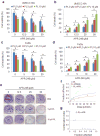
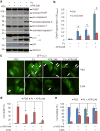
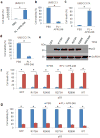

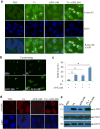
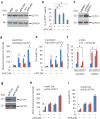

Similar articles
-
p53-targeted lincRNA-p21 acts as a tumor suppressor by inhibiting JAK2/STAT3 signaling pathways in head and neck squamous cell carcinoma.Mol Cancer. 2019 Mar 11;18(1):38. doi: 10.1186/s12943-019-0993-3. Mol Cancer. 2019. PMID: 30857539 Free PMC article.
-
PARP-1 inhibitors sensitize HNSCC cells to APR-246 by inactivation of thioredoxin reductase 1 (TrxR1) and promotion of ROS accumulation.Oncotarget. 2017 Sep 26;9(2):1885-1897. doi: 10.18632/oncotarget.21277. eCollection 2018 Jan 5. Oncotarget. 2017. PMID: 29416738 Free PMC article.
-
Piperlongumine selectively kills cancer cells and increases cisplatin antitumor activity in head and neck cancer.Oncotarget. 2014 Oct 15;5(19):9227-38. doi: 10.18632/oncotarget.2402. Oncotarget. 2014. PMID: 25193861 Free PMC article.
-
TP53 Mutations in Head and Neck Squamous Cell Carcinoma and Their Impact on Disease Progression and Treatment Response.J Cell Biochem. 2016 Dec;117(12):2682-2692. doi: 10.1002/jcb.25592. Epub 2016 Jun 3. J Cell Biochem. 2016. PMID: 27166782 Free PMC article. Review.
-
NRF2, p53, and p16: Predictive biomarkers to stratify human papillomavirus associated head and neck cancer patients for de-escalation of cancer therapy.Crit Rev Oncol Hematol. 2020 Apr;148:102885. doi: 10.1016/j.critrevonc.2020.102885. Epub 2020 Feb 1. Crit Rev Oncol Hematol. 2020. PMID: 32062315 Review.
Cited by
-
A thiol-bound drug reservoir enhances APR-246-induced mutant p53 tumor cell death.EMBO Mol Med. 2021 Feb 5;13(2):e10852. doi: 10.15252/emmm.201910852. Epub 2020 Dec 14. EMBO Mol Med. 2021. PMID: 33314700 Free PMC article.
-
Combination of Vitex pseudo-negundo methanolic-extract with cisplatin can induce antioxidant activity and apoptosis in HeLa and Caski cells.Front Pharmacol. 2024 Dec 4;15:1476152. doi: 10.3389/fphar.2024.1476152. eCollection 2024. Front Pharmacol. 2024. PMID: 39697540 Free PMC article.
-
Kuanxiong Aerosol () in Treatment of Angina Pectoris: A Literature Review and Network Pharmacology.Chin J Integr Med. 2021 Jun;27(6):470-480. doi: 10.1007/s11655-021-2867-y. Epub 2021 May 28. Chin J Integr Med. 2021. PMID: 34047948 Review.
-
Reconstructing the immunosenescence core pathway reveals global characteristics in pan-cancer.Cancer Immunol Immunother. 2023 Nov;72(11):3693-3705. doi: 10.1007/s00262-023-03521-4. Epub 2023 Aug 22. Cancer Immunol Immunother. 2023. PMID: 37608128 Free PMC article.
-
Piperlongumine Inhibits Akt Phosphorylation to Reverse Resistance to Cisplatin in Human Non-Small Cell Lung Cancer Cells via ROS Regulation.Front Pharmacol. 2019 Oct 11;10:1178. doi: 10.3389/fphar.2019.01178. eCollection 2019. Front Pharmacol. 2019. PMID: 31680961 Free PMC article.
References
-
- Trachootham D, Alexandre J, Huang P. Targeting cancer cells by ROS-mediated mechanisms: a radical therapeutic approach? Nat Rev Drug Discov. 2009;8:579–591. - PubMed
Publication types
MeSH terms
Substances
Grants and funding
LinkOut - more resources
Full Text Sources
Other Literature Sources
Medical
Research Materials
Miscellaneous

